Few speakers have left me on the couch with goosebumps all over. The Quad ESL 63 has done it. Sonus faber, Dynaudio and Audiovector have done it a few times. But very few speakers have left a lasting impression.
These, on the other hand, have, and it didn’t take many minutes. Note the name: KEF Reference 5 Meta. For the floorstanding speakers are pretty much the ultimate music mediator, and they’ve achieved this with relatively simple means.
I almost didn’t think it was possible that a small plate behind one of the speaker units could mean so much to the sound when I tested KEF’s compact LS50 Meta in 2020. But the small speakers played amazingly open and clear, and were a transformed from their LS50 predecessor.
The Reference 5 has undergone the same transformation. The current Meta edition has become much more than an upgraded Mark II edition; it’s almost a brand new speaker, even if the look hasn’t changed since we tested the Reference 5 in 2015.
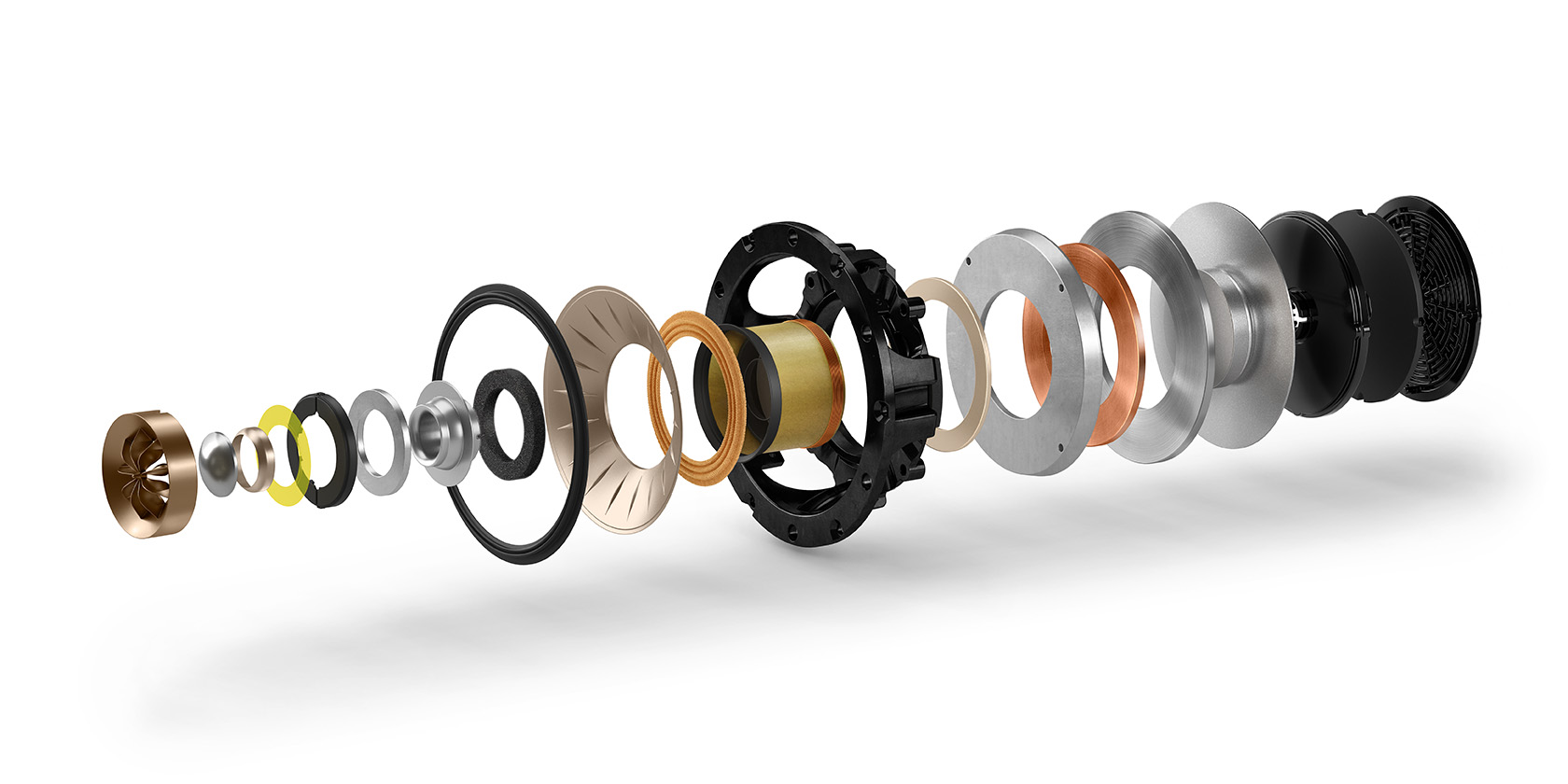
The Reference 5 Meta features KEF’s patented coaxial unit, with the tweeter placed in the centre of a midrange driver. Here the 12th generation of the special unit called Uni-Q is used, just in a more expensive version than that found in the LS50 Meta.
In the Meta version of the Reference 5, the crossover has been modified and upgraded, and KEF believe they have succeeded in making the sound even more transparent, while improving the cabinet construction. They look just like their predecessor, but inside the geometry of the reinforcements in the cabinet has changed. KEF say they’ve used finite element analysis to optimise the damping of resonances, especially at low frequencies.
This should dampen vibrations further compared to the old cabinet. Together with the new Uni-Q unit and a special acoustic solution called MAT, this has made the Reference 5 Meta a completely different speaker.
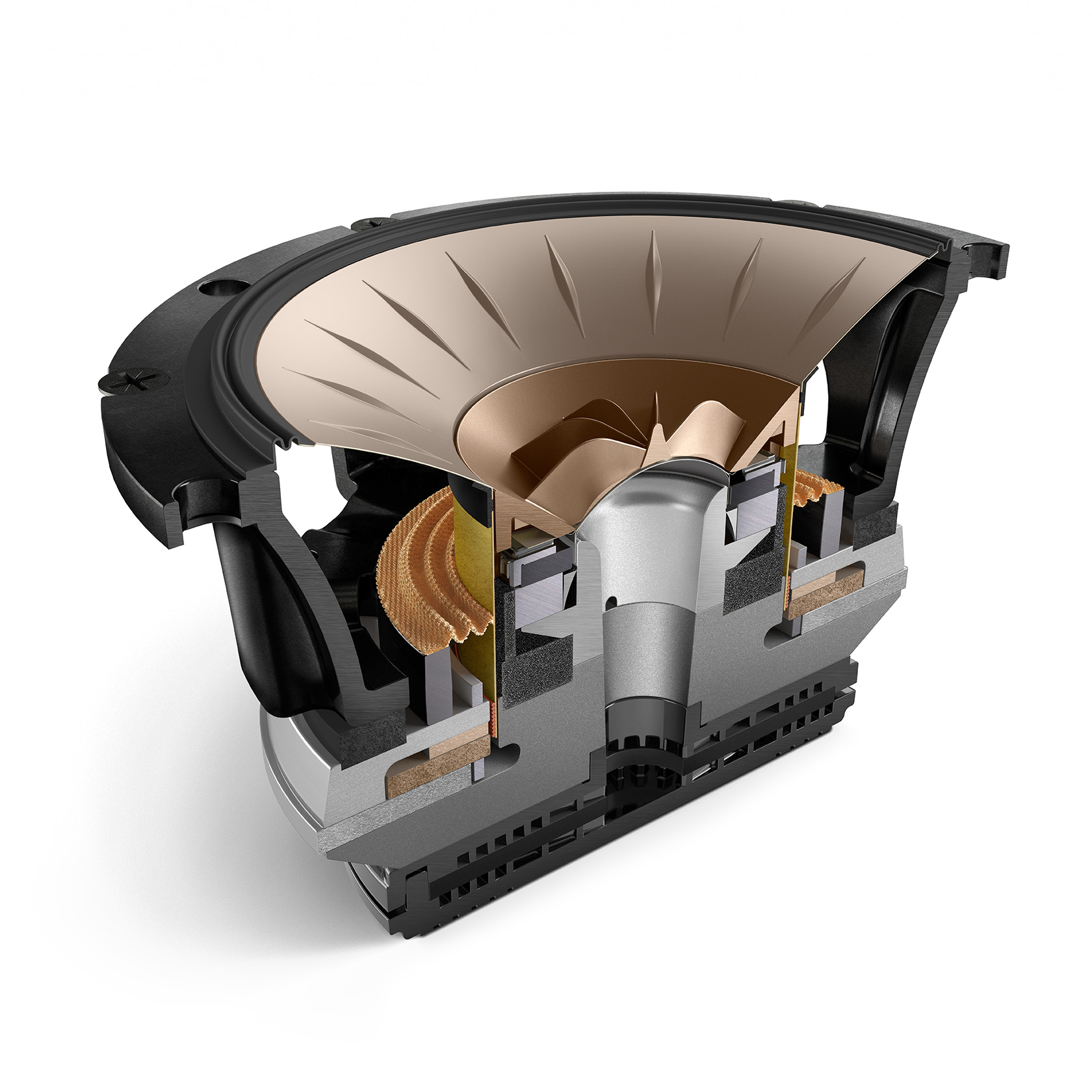
MAT
When KEF launched the 12th generation of Uni-Q, they readily explained what they had changed and tried to improve. Among other things, they had created a new diaphragm suspension based on analyses of various simulations. They had also made a new voice coil system and new damping in the space between the tweeter and the midrange diaphragm, which made room for the special plate behind the unit with what they call Metamaterial Absorption Technology – MAT.
This led to several improvements. Among other things, it dampened the distortion that can occur at higher frequencies, and with MAT behind the unit, it also achieved a 40 percent more linear frequency response over a wider frequency range.
MAT is a round plate behind the Uni-Q unit with an intricate maze pattern milled into one side of the plate. These recesses absorb different frequencies and KEF believes they can eliminate unwanted sound from the back of the unit. As they say, the MAT acts as an acoustic black hole, removing 99 percent of unwanted frequencies, particularly in the 620 Hz to 40 kHz range.
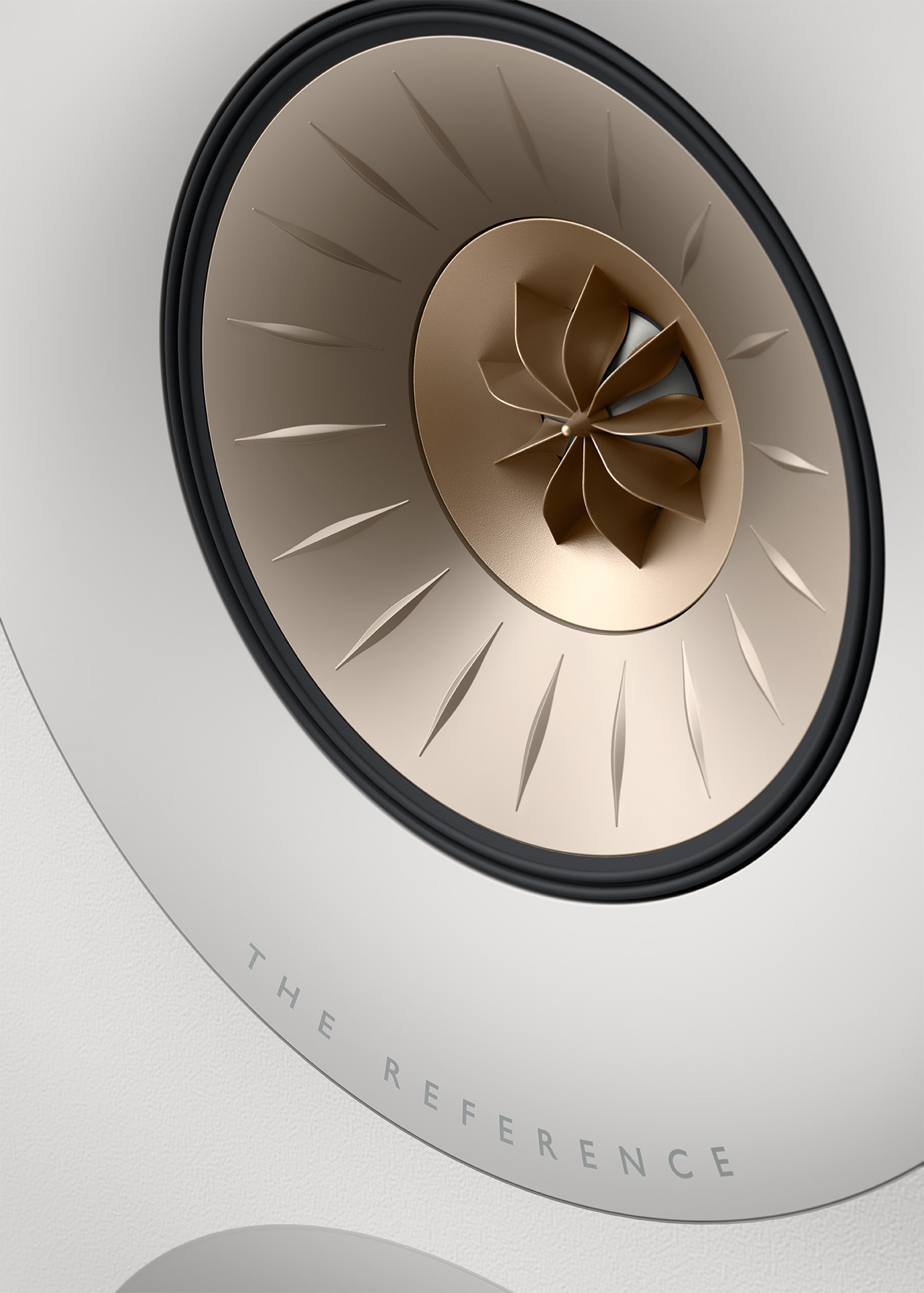
Meta across the range
MAT definitely gave sound quality a significant boost on the LS50 Meta – especially in the midrange and treble – and since then we’ve really just been waiting for MAT to find its way onto all the other KEF speakers with Uni-Q units.
The Reference range is the first to get the full META treatment, and the same upgrades have also been made to the smaller Reference 3 Meta, the Reference 1 Meta compact speaker and the two centre speakers in the Reference range.
The flagship Reference 5 Meta, which we test here, is built with four 16.5cm woofers in each speaker, just like its predecessor. The units have a slightly curved aluminium diaphragm cast in one piece, as well as the already mentioned Uni-Q unit in the middle.
On the back you’ll find two large bass reflex ports. They actually come in two different lengths, so you can attenuate the bass by replacing the tubes at the back if you think you’re getting just too much bass.
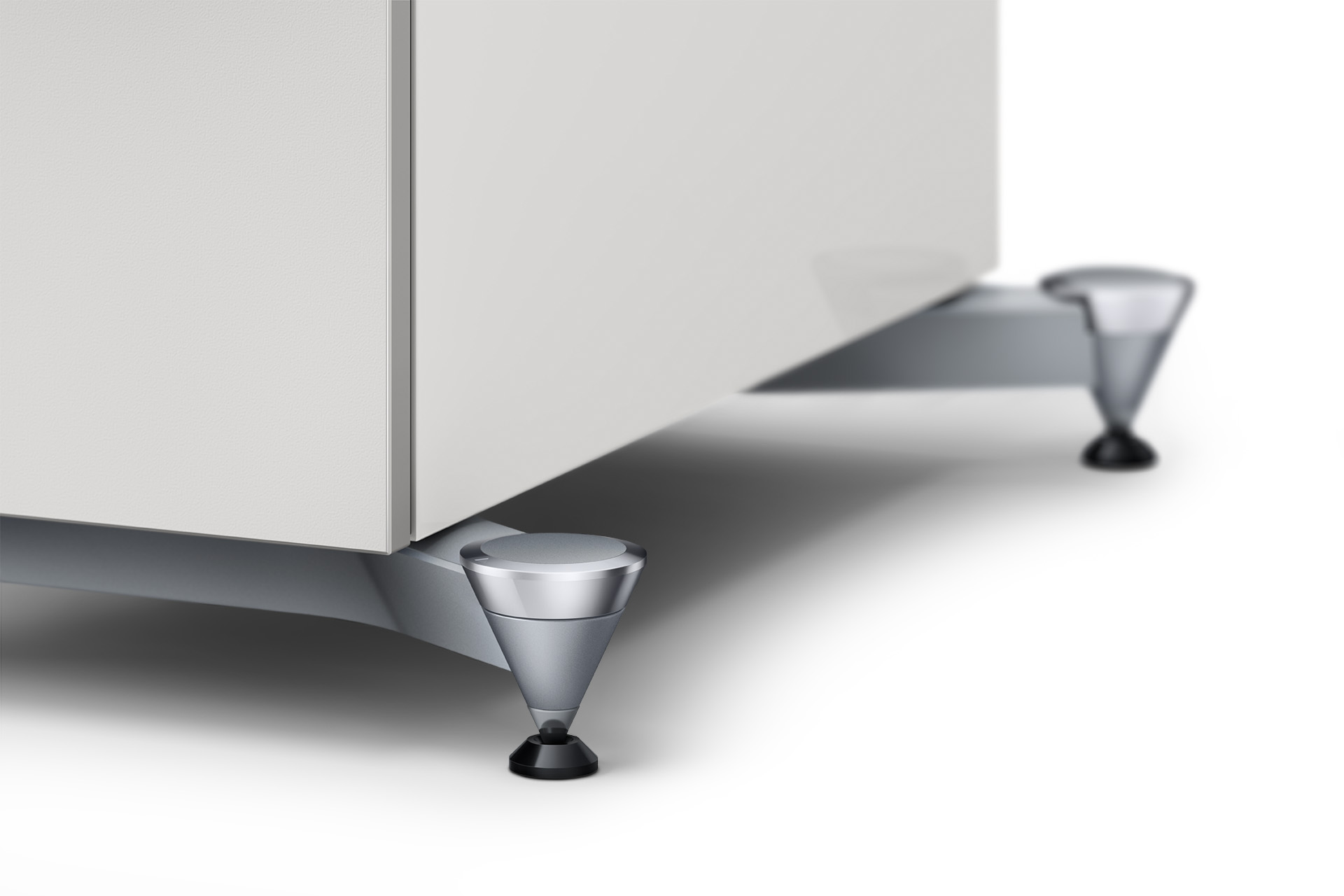
Five cabinet variants
The speakers we tested had black lacquer finishes and copper-coloured Uni-Q units. They are also available with black drivers, while the two white variants have silver-grey base units and either blue lacquer or champagne-coloured Uni-Q. In addition, there is a version in silk matt walnut finish with silver grey front panel and ditto membranes.
The speakers come with adjustable spikes and matching parquet protectors, and can be ordered with round textile grilles for each unit.
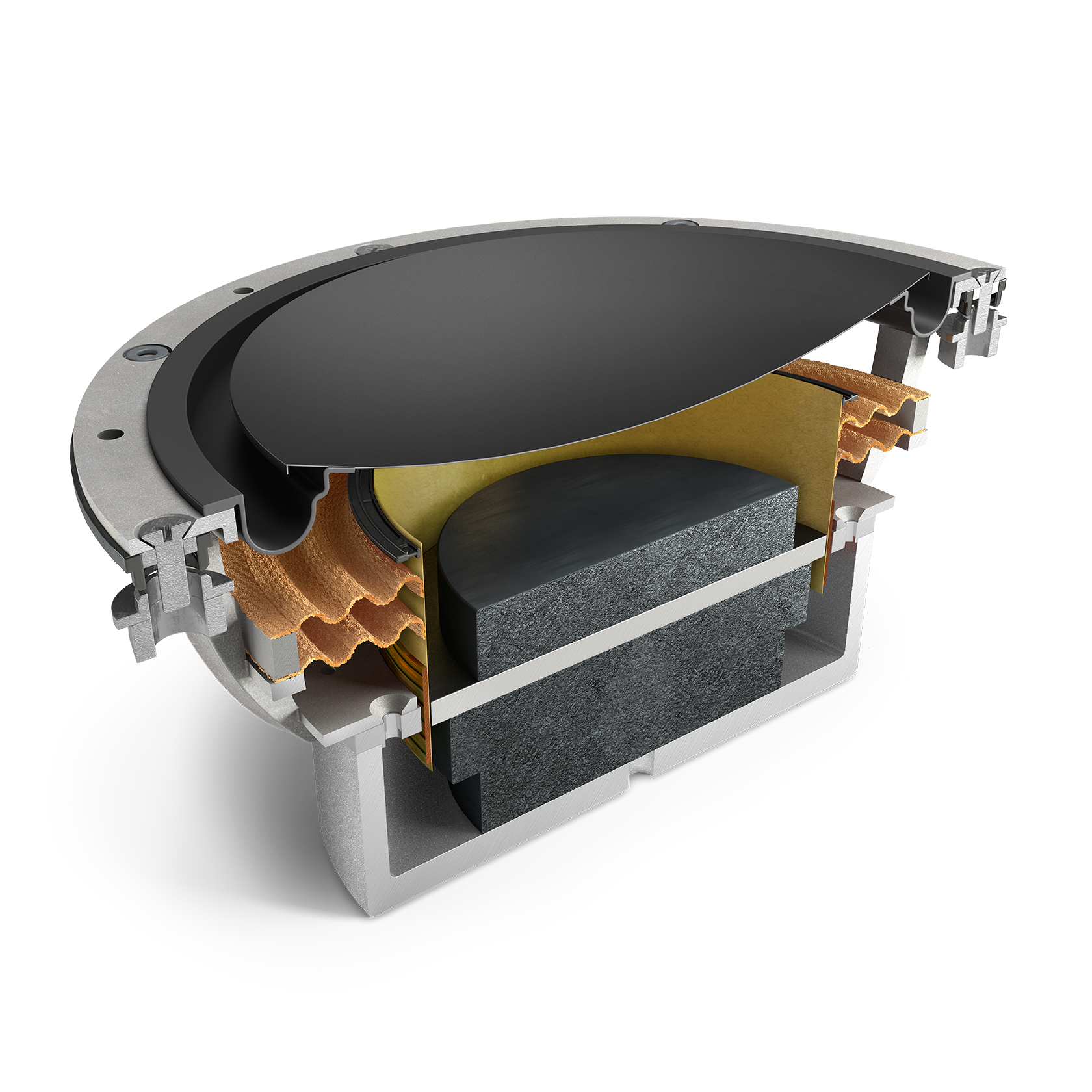
Amplifier matching
The Reference 5 Meta has become easier to drive, even though the nominal impedance is 4 ohms. Sensitivity is rated at 88 decibels, which must be said to be acceptable for such a complex design. The excellent, but not overwhelmingly powerful Technics SU-G700 M2 thus had no problems driving the large speakers.
I could almost play as loud as I wanted without the amp’s claimed 60 watts of power being experienced as too little. The 70 watt Octave V 70 SE also had no problems driving the speakers, but it was with the Rotel Michi X3 at 2 x 350 watts that things really got going.
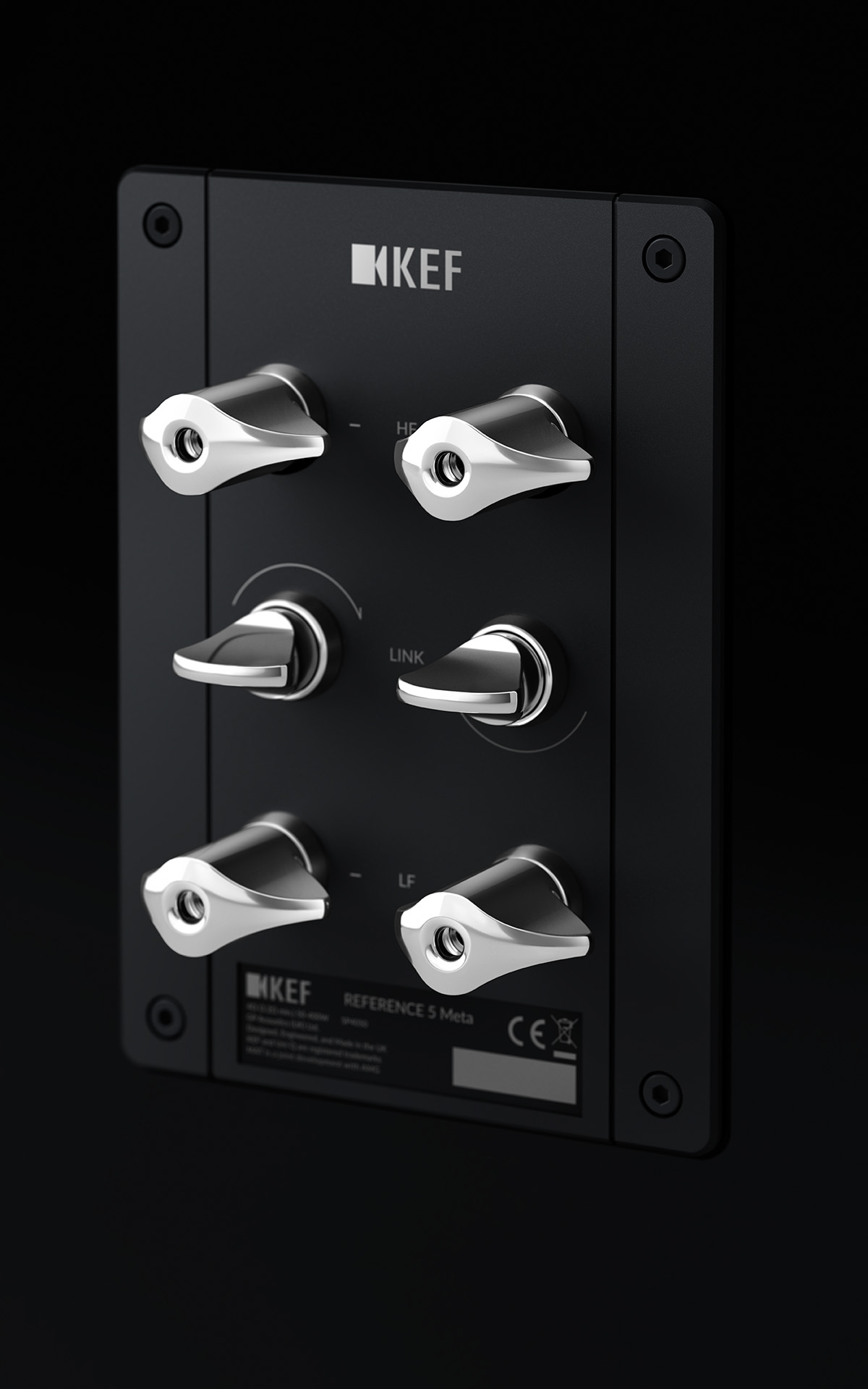
Stunning musical experience
When I tested the predecessor in 2015, I hinted that they had the potential to be a bestseller in their class. As we all know, everything is relative, but even though they cost quite a bit, I had a hard time coming up with a more complete speaker in the same price range.
The Meta version anno 2022 is almost twice as expensive. This is of course due to both cost increases and currency changes, but also because the Meta versions are expensive to produce. Fortunately, you feel it when the music starts and the room fills with a huge soundstage with exceptionally massive and potent bass dynamics.
It was almost a shocking experience to put on an old opera recording.
I was completely blown away by the overture to Puccini’s La Boheme. Suddenly I had the whole orchestra pit at my feet, and the bass from the big strings almost made the floor creak. The sound pressure was dizzyingly high, and I grabbed the remote to mute the Michi amplifier before the tenors cut through the air.
Sometimes the high volume on old opera recordings can make for some unpleasant experiences. You can feel it cutting into your ears, and the sound of lusty tenors or sopranos can sound like you’re cutting glass.
But this didn’t happen here. On the contrary, the tenors sounded smooth as silk, so there was no need to turn it down.
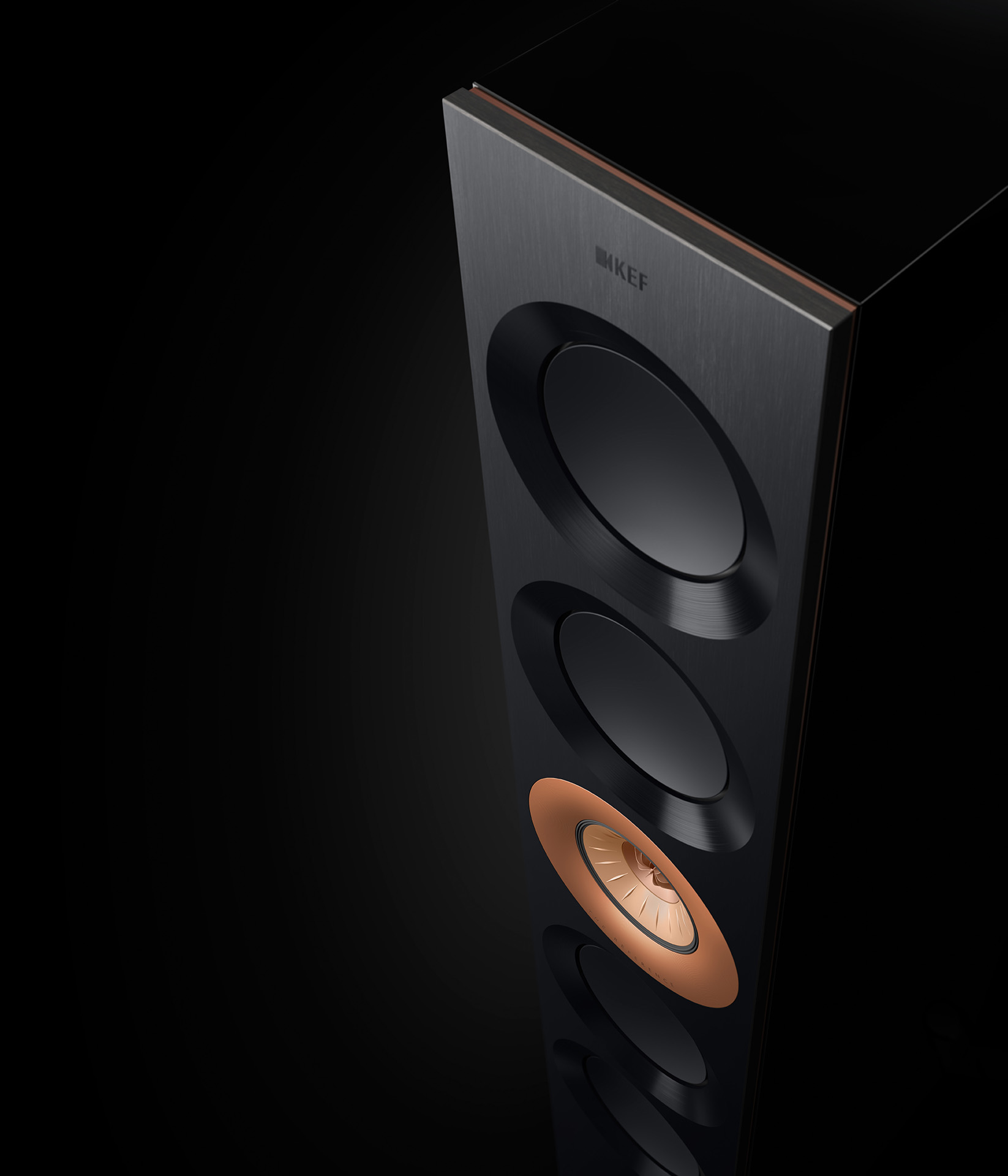
The KEF speakers also managed something else: to bring out the mood of the recording situation. The live recording Up For It with the Keith Jarrett Trio, for example, sounded warm and close, with striking control of the bass. I’ve rarely heard the tiny nuances of sound from the double bass, the whiskers on the snare drum and the deep resonance from the piano’s lowest frequencies more vividly rendered.
The small nuances, the almost imperceptible tempo shifts and changes in pitch – all come out in the huge soundscape and are served up on a silver platter with the utmost naturalness.
I don’t often play Kari Bremnes’ old albums, but the distinctive percussion on her “Togsang” can reveal all sorts of problems in a system. Turn up the volume to something near concert volume, and if the speakers survive, you can feel the bass in your stomach. With KEF speakers, you can feel the bass in your spine. With total control.
If you put your test hat down and just try to enjoy some background music, you’ll soon find that it’s quite difficult. The speakers’ amazing ability to make the music sound so real and close captures the attention and holds it.
A good old recording with Bill Evans on piano and Barney Kessel on guitar is a nice musical backdrop. Perfect for a jazz fan who also needs to work while listening to music, but who also won’t settle for playing nicely in the background.
Instead, I turned up the volume, put down the laptop and sat down to listen. Again, it was all the little nuances in the music that caught my attention.
The KEF speakers deliver an open soundstage with depth and finesse. They play bass with an authority that I usually associate with large subwoofers, and at the same time the warm and open sound is hugely appealing whatever the style of music. There’s detail in spades here and a silky smooth, extremely resolved midrange and treble that surpasses anything I’ve previously heard from KEF.
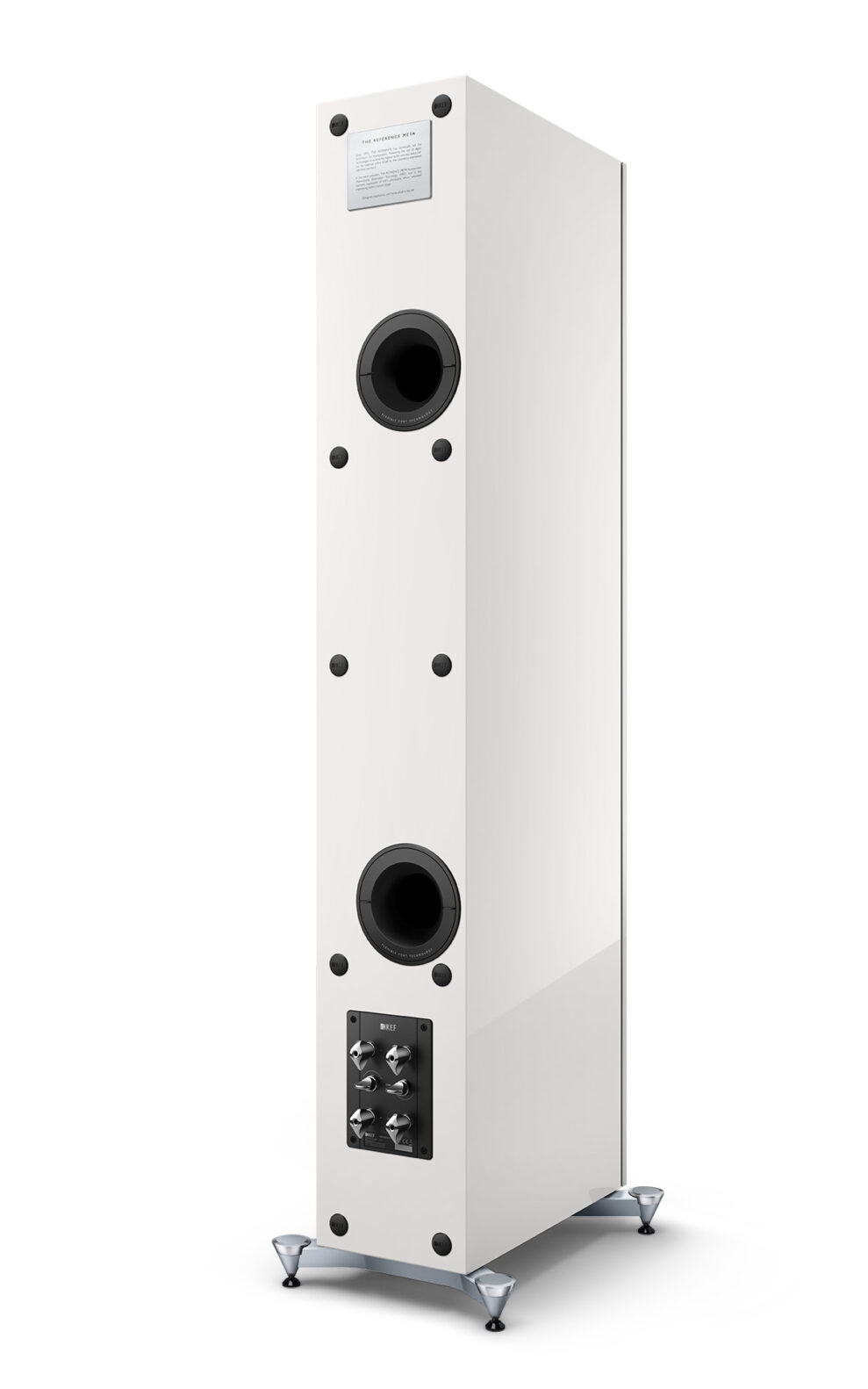
Competitors
Reference 5 Metas’ price hike has moved them up a division on the price scale. Here they face stiff competition from the likes of Audiovector R6 Arreté, Sonus faber Serafino Tradition and Bowers & Wilkins 803 D4.
The sleek R6 Arreté cost more and sound extremely weightless and transparent. But they don’t have quite the same depth of bass as the KEF speakers. The somewhat cheaper Serafino deliver the music nicely wrapped in a warm envelope that’s very addictive.
The more unconventional-looking 803 D4s we haven’t tested yet (upcoming), but after hearing the 801 D4s they may well be the most relevant candidate for a duel with the Reference 5 Meta.
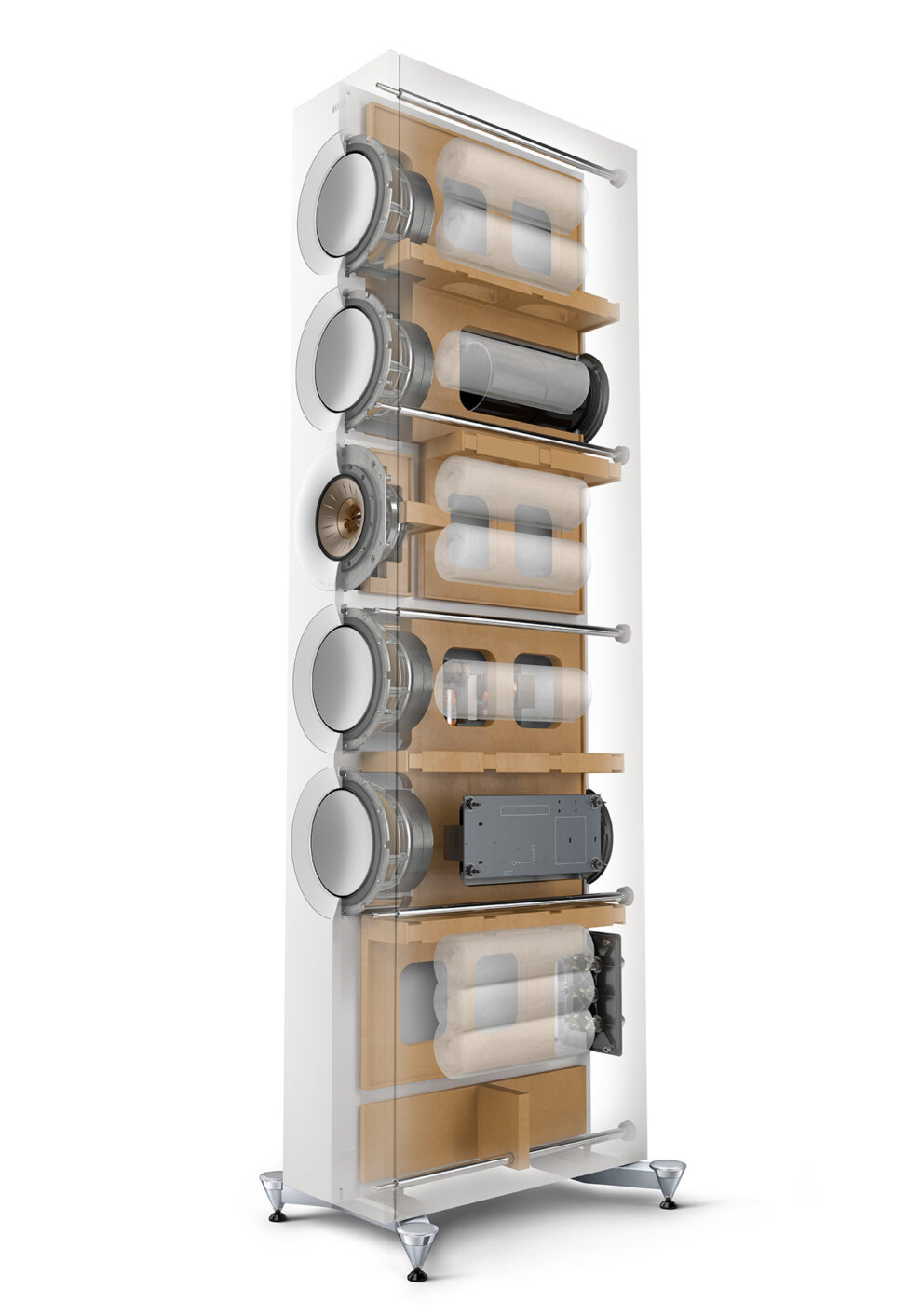
Conclusion
When we tested its predecessor, the conclusion was that these were the best speakers we’d heard in their price range. There weren’t many speakers at the time that combined refinement and ferocity in the same way, but the new Reference 5 Meta takes it all up a notch. Not just the price, but the sound.
Here you get even more of everything; in particular, it’s amazing to experience how open and transparent the sound has become. The soundstage appears more cohesive, and there’s a long way between the times we hear bass rendered with such authority. This will be hard to top.
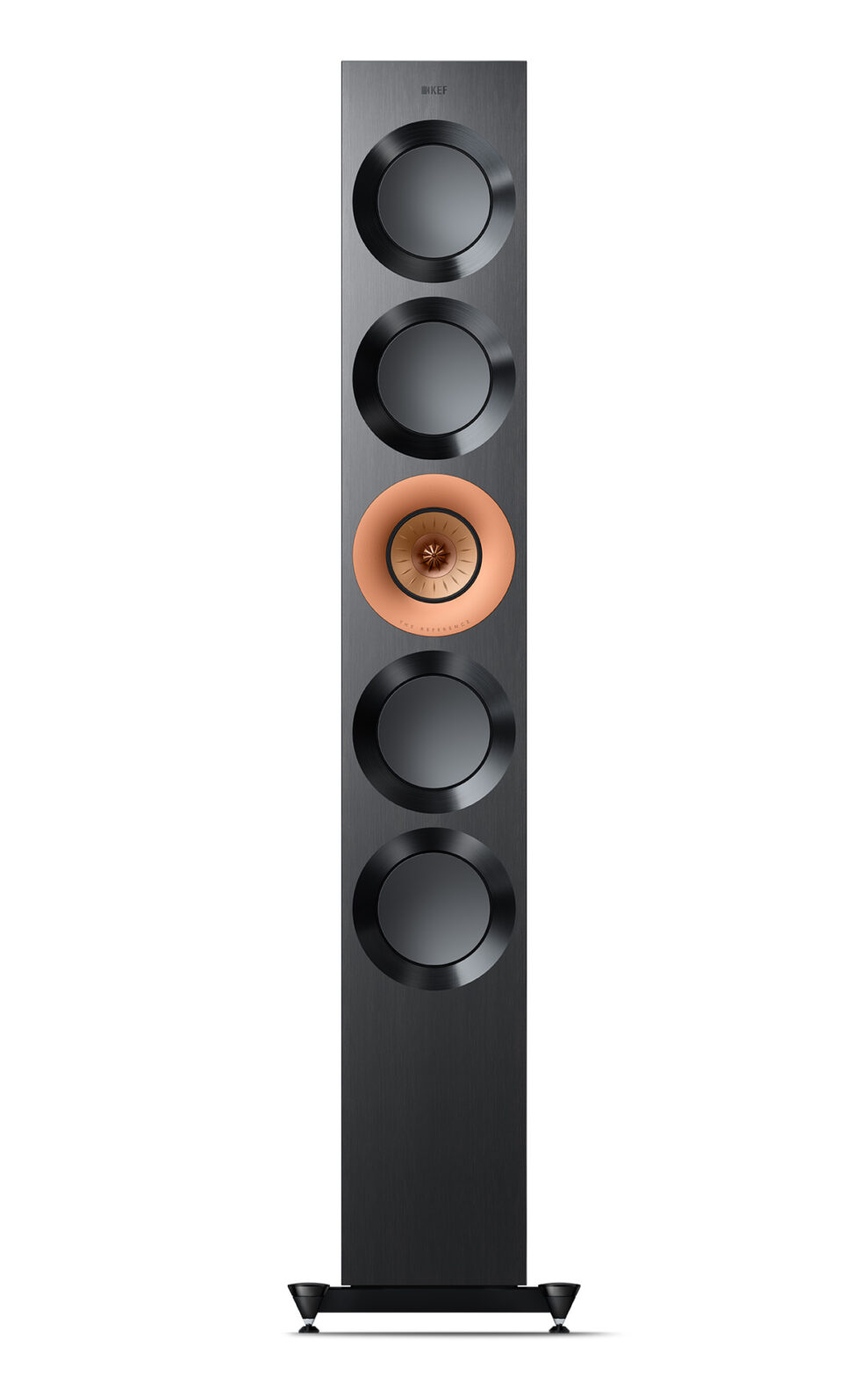

We think
Reference class from A to Z. Infinitely transparent soundstage with massive dynamics, enormously potent bass and extreme resolution. The price has taken a big hike since 2015.
20000 €
Specifications
- Type: 3-way floorstanding speakers with bass reflex
- Woofer: 4 x 16.5 cm aluminium cone
- Midrange: 12.5 cm aluminium
- Tweeter: 2.5 cm aluminium w. MAT
- Sensitivity: 88 dB
- Impedance: 4 ohms
- Frequency range: 40 Hz – 35 kHz (+/-3 dB)
- Crossover frequencies: 450 Hz, 2100 Hz
- Max. load: 400 W
- Recommended amplifier power: 50-400 W
- Dimensions and weight: 140 x 32.3 x 46.7 cm / 60.2 kg
- Finish: Black, white, walnut/silver grey
- Web: kef.com
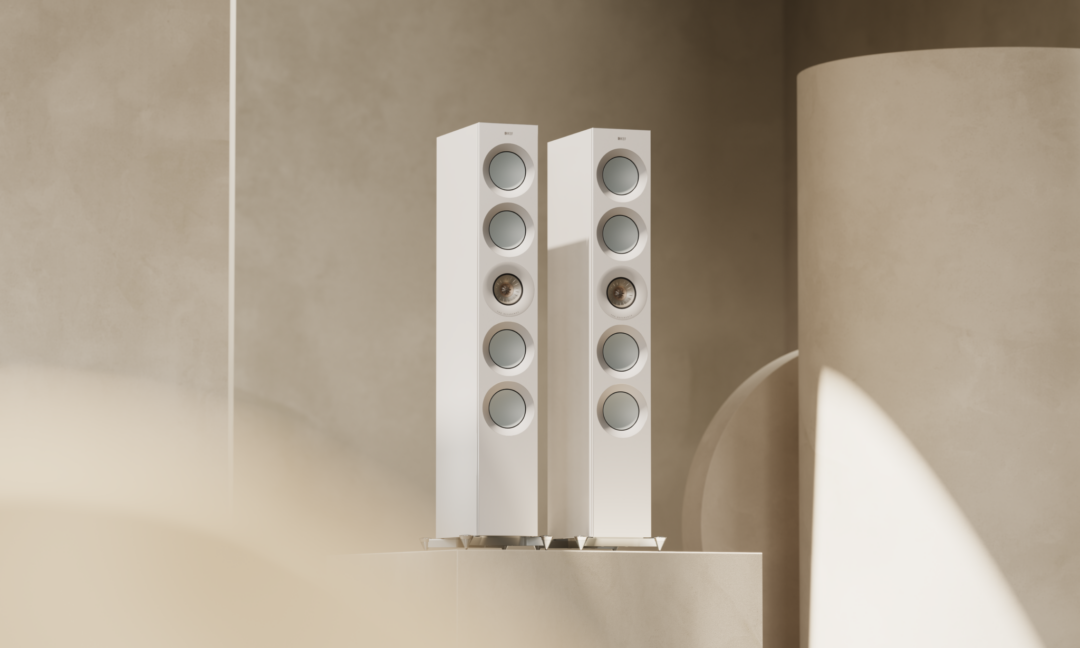

..Question can money buy a better engineered speaker KEF reference is as good as it gets thanks, to the team in the UK..you see always do your homework :]..best in the world
Im planning to combine a pair of these with the updated Hegel P30/H30 (whenever they might be available) as well as a pair of Rel’s G1 mk2 . It should be a decent combo.